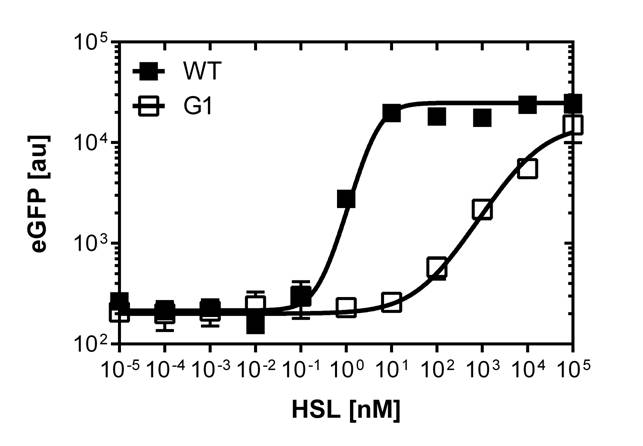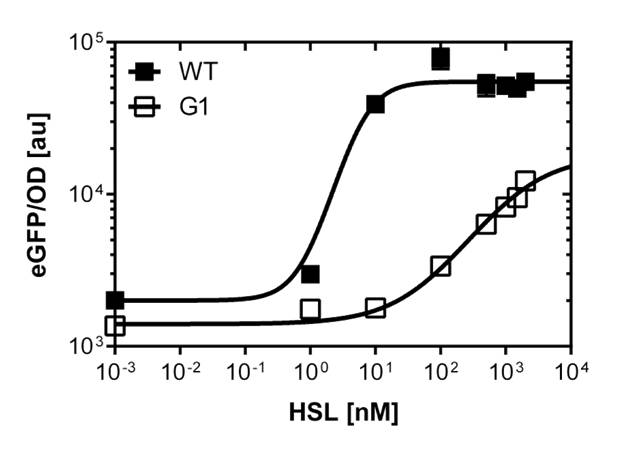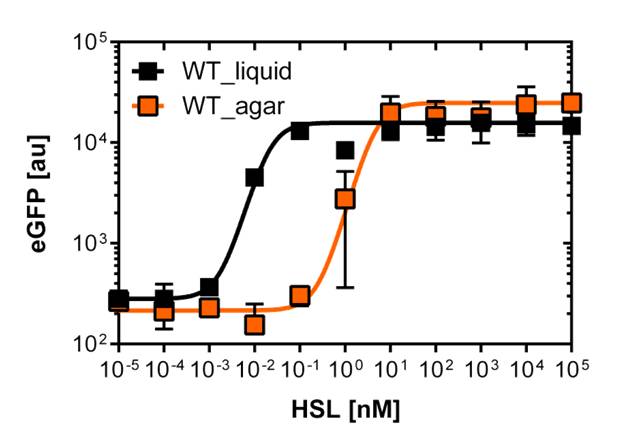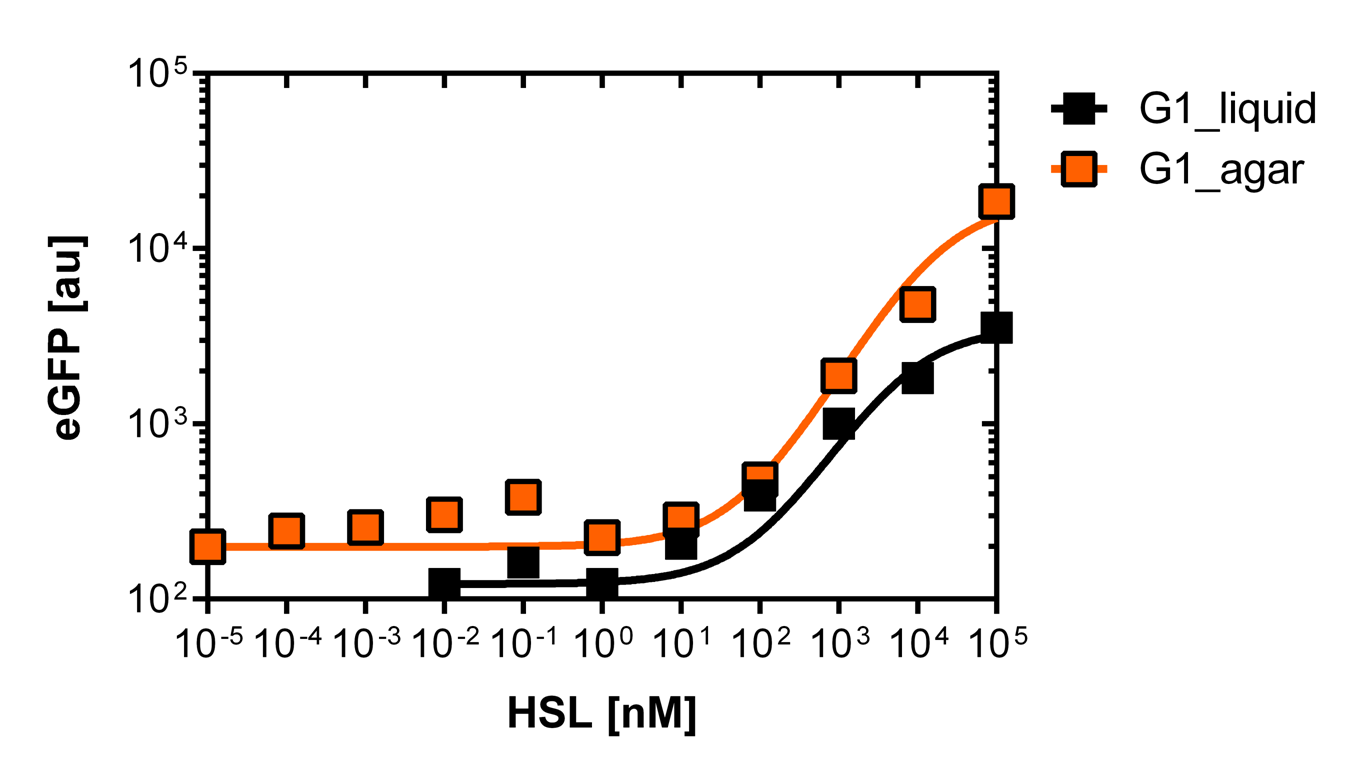Team:ETH Zurich/Experiments 5
From 2013.igem.org
Contents |
High pass filters
The detection of different OHHL levels depending on the number of mines needs to have filters in our detection system. We decided to create a high pass filter library by doing site directed mutagenesis of the wild type [http://parts.igem.org/Part:BBa_R0062 BBa_R0062 PluxR]. The sites for mutagenisis were chosen from literature (2) (see Figure 1).
We were able to isolate a promoter having a lower expression level and being less sensitive than the wild type promoter (Figure 2). The promoter is called [http://parts.igem.org/Part:BBa_K1216007?title=Part:BBa_K1216007 PluxR variant BBa_K1216007] (G1, according to its initial position in the deep well plate.
Those two different promoters are used to created two different high pass filter to detect the different OHHL concentrations. The two promoters were analyzed not only by 96-well plate assay and single cell analysis (FACS) but also for E.coli grown in liquid culture and on agar plate. Interestingly the EC50 sensitivity (half maximal effective concentration, EC50) is different between cells in liquid culture and cells in agar plates.
Site directed saturation mutagenesis PCR of the BBa_R0062 PluxR

We did site directed saturation mutagenisis of specific sites of the lux box according to the results taken from literature (2)(see Figure 2).
We mutated the promoter directly in the BBa_J09855 construct and cloned into a eGFP gene as a reporter to be able to screen for differences in the dose response curves. In the end we isolated one mutated promoter which shows a shift in sensitivity (see section below)
Fluorescence data analysis
The fitting of the following graphs was performed using this equation :
Output = eGFP levels [au]
Top = maximal eGFP level [au]("full induction")
Bottom = minimal eGFP level [au](“leakiness”)
n = Hill coefficient (“cooperativity”)
EC50 = Half-maximal effective concentration (“sensitivity”)
[AHL]=OHHL concentration [nM]
Native OHHL tests using microtiter plates
In order to select mutated luxR promoters we need to know about the sensitivity.Thus, we carried out dose response cruves using the Tecan Infinite M200 plate reader. The test range was inspired form literature (1).
The results are shown in Figure 2.
Dose response curves of luxR promoters under single cell analysis
Liquid culture and agar plate OHHL detection comparison
Here we employed single cell flow cytometry to obtain high quality fluorescence data of each promoter under different OHHL concentrations.we started by analyzing cells grown in liquid culture, then we shifted to agar plate format in order to fit to our project. We obtained different EC50 values between cells in liquid culture and in agar plates for each luxR promoter (see Figure 3, 4 and 5).See methods for the protocol

In liquid culture
The direct plot of both sensitivity curves (Figure 6) shows the shifted sensitivity of the luxR promoter in comparison to the wild type BBa_R0062 promoter. The EC50 shifted from 0.02nM for the wild type BBA_R0062 to 6'250 nM for the luxR variant promoter which is equal to a 312'500 fold increase.
On agar plates
The direct plot of both sensitivity curves (Figure 6) shows the shifted sensitivity of the luxR promoter in comparison to the wild type BBa_R0062 promoter. The EC50 shifted from 4.45nM for the wild type BBA_R0062 to 17'814 nM for the luxR variant promoter which is equal to a 4000 fold increase. Therefore, comparing with the results from cells growing in liquid culture an increase of 220 and 3 times for wild type BBa_R0062 and pluxR variant respectively. If you want to know more about the methods please click here
References
(1) M Geske G.D.,Evaluation of a focused library of N-aryl L-homoserine lactones reveals a new set of potent quorum sensing modulators.
(2) Luis Caetano A Mutational Analysis Defines Vibrio fischeri LuxR Binding Sites
 "
"











